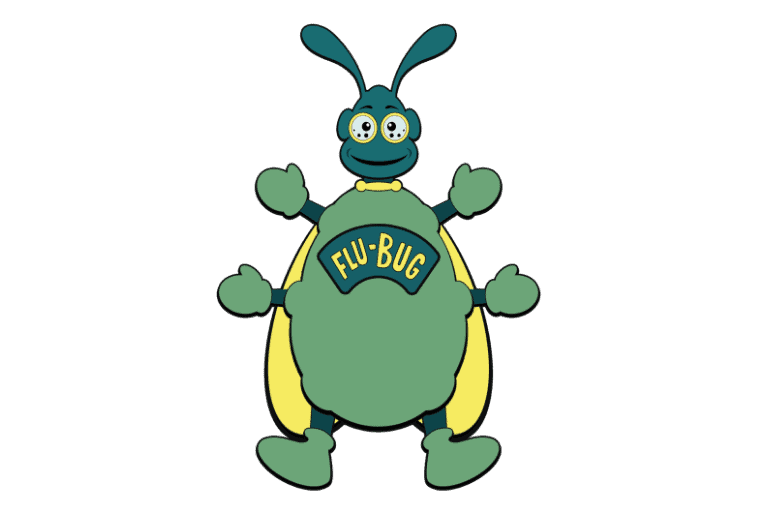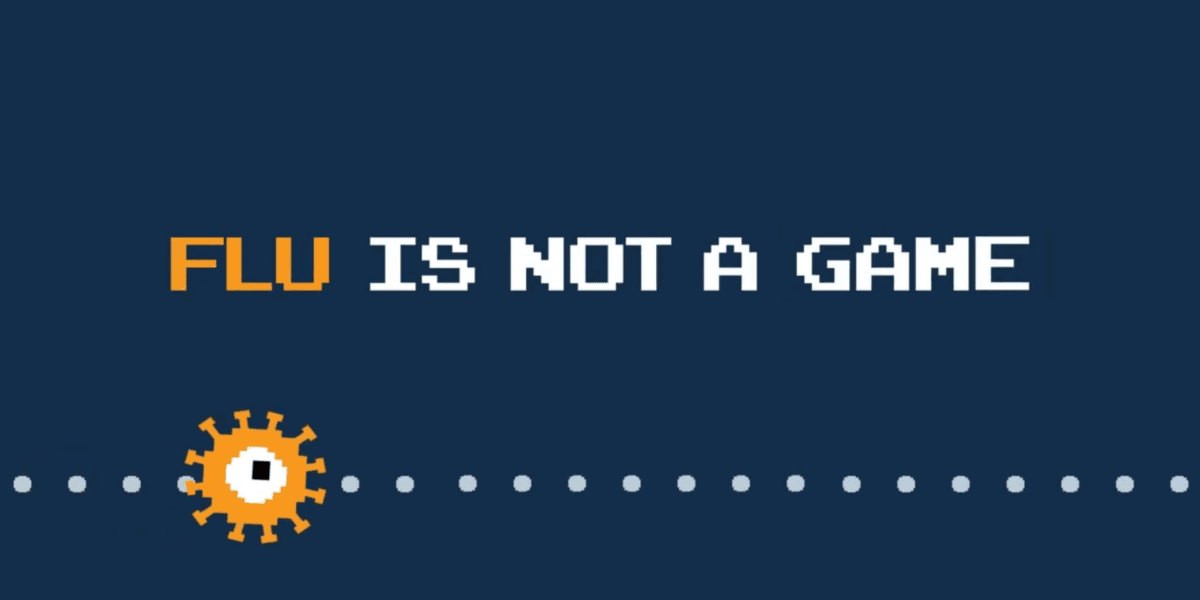Influenza (Flu)
Influenza (flu) is a serious illness that leads to thousands of hospitalizations, most in children younger than 5 years of age. On average, an estimated 20,000 children under the age of 5 are hospitalized due to flu complications each year.
Every year, some children die from flu. Most of the deaths are in children who have not been vaccinated, and many of the deaths are in healthy children who have no underlying illnesses.
Flu should not be confused with a bad cold or “stomach flu.” Flu is a contagious viral infection of the nose and throat but is much more serious than the common cold. In mild cases, flu causes high fever, head and body aches, coughing for days, severe fatigue for up to two weeks or more.
Anyone can get flu but certain people may be at increased risk for developing flu-related complications, including pregnant women and infants younger than 6 months of age, who are too young to be vaccinated. To create a protective cocoon of immunity around unvaccinated infants, parents should make sure that everyone who comes in close contact with the baby is vaccinated against flu.
Children age 8 years and younger who have not previously been vaccinated may require 2 doses of flu vaccine to be fully protected. Parents and caregivers should talk with their pediatrician or other trusted healthcare professional about how many doses their child may need this season.
How is flu spread?
Flu can spread easily from person to person. When someone who has it sneezes, coughs, or even talks, the virus passes into the air and can be breathed in by anyone nearby. People can also become infected by touching something–such as a surface or object–with influenza virus on it and then touching their mouth or nose. Children are major spreaders of flu.
What are the symptoms of flu?
Flu is not just a common cold. It usually comes on suddenly, and people with flu may have some or all of the following symptoms (think F.A.C.T.S.):
Fever
Aches (muscle, body, and headaches)
Chills
Tiredness (fatigue)
Sudden onset
Cough, runny or stuffy nose, and/or sore throat
Children may have additional symptoms such as earaches, nausea, vomiting, and diarrhea.
How can you prevent getting flu?
Annual vaccination is the best way to prevent the flu. The vaccine is safe and effective, and is given to tens of millions of individuals each year. The Centers for Disease Control and Prevention (CDC) recommends 3 steps to help prevent flu:
- Get an annual flu vaccine
- Practice healthy habits (stay home when sick, cover coughs and sneezes, wash hands often, and consider wearing a mask if you are around others at higher risk of severe illness)
- Take flu antivirals if prescribed
Who should be vaccinated?
Everyone age 6 months or older should get a flu vaccine every year.
Where can children get vaccinated?
Parents and caregivers should contact their pediatrician or other trusted healthcare professional to request flu vaccines for their children, themselves, and other household contacts. Local hospitals, health clinics, and retail stores including pharmacies all offer vaccines. Some schools and employers may also offer vaccination.
Reviewed September 2024
Source: Centers for Disease Control and Prevention
Flu and Children Resources
Utilize the resources below to better understand Influenza (Flu) and how it affects children.
Traveling Flu Bug
Help #TravelingFluBug spread awareness, not disease! Join the journey to help #FightFlu. Download and print out the Flu Bug and take a picture of the cutout in…
Flu Is Not A Game
Animated videos on the importance of annual flu vaccination for people with chronic health conditions



